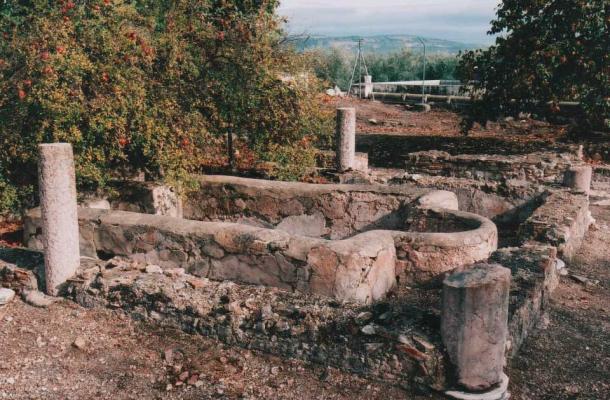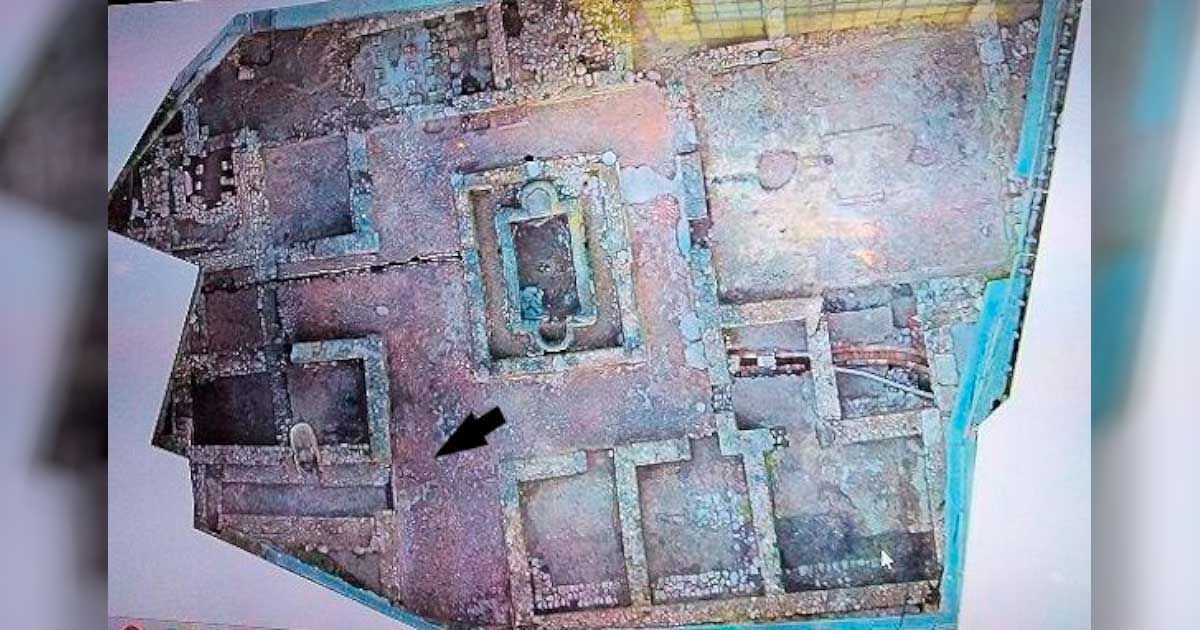1,800-Year-Old Sanctuary Dedicated to God Mithras Found in Spain
The remains of a sanctuary dedicated to the god Mithras, along with leftovers from ritual banquets, have been found during excavations at the Villa del Mitra in Cabra, Spain.
According to Heritage Daily, the discovery was made by archaeologists from the University of Málaga, the Carlos III University of Madrid, and the University of Córdoba. The team uncovered the remains of the Mithras sanctuary, which dates back to the 2nd century AD with a second construction phase in the late 3rd century AD.
The sanctuary is a rectangular room, located to the southwest of the domus, with dimensions of 7.2 by 2.5 meters (24 by 8 feet). It features a narrow entrance that leads down several steps into the sanctuary, which is comprised of two stone benches along the walls. The team believes that these benches were used by worshipers who would sit and perform rituals and engage in banquets in honor of Mithras.
The walls of the sanctuary contain fragments of Roman bricks, including one with two holes or niches that likely held a tauroctony sculpture. The floor of the room was covered in a dark burnt layer, which upon closer inspection revealed fragmented remains of pigs, birds, and rabbits. This evidence suggests that cooking took place during the ritual banquets.
- Mithras, the Persian God Championed by the Roman Army
- Elephant Tomb Discovered in Spain May Have Been a Temple to the God Mithras
The Villa del Mitra
ArtNews reports that the Villa del Mitra, located within the ancient Roman city of Licabrum, dates back to the 1st century AD. It is named after the discovery of a 2 nd century sculpture found in situ of Mithras sacrificing a bull, which symbolizes death and resurrection.
The villa was first explored by archaeologists during the 1970s and 1980s, during which time a courtyard featuring a pond and multiple rooms with ornate mosaic flooring were uncovered. Further excavations in 1981 revealed the remains of a heating system called a hypocaust, as well as coins from the reigns of Philip the Arab, Diocletian, and Valentinian II.

The central pond in the Villa del Mitra, Cabra, Spain (James Narmer – CC BY SA 4.0)
The Ancient Worship of Mithras
The god Mithras was first worshiped by Persians in the late 1st century AD, where he was known as ‘Mithra’, and he was associated with the light and sun. His cult following spread rapidly across the Roman Empire, and worship of this Indo-Iranian deity was greatly focused on the deity as being the god of friendship, contract and order. What were known as the ‘Mithraic Mysteries’ were a series of teachings taught by the mystery cult and its followers spread from the Italian Peninsula and border regions across the whole of the Roman Empire.
The cult of Mithras was a secret one in which Votaries (followers) worshipped Mithras in caves and “hidden away” temples. This was to create the feeling of being part of a special group. The cult’s secrecy was tolerated by the authorities and especially by the Roman emperors, because it was generally in favor of imperial power.
While over 200 Mithras temples have been found between Syria and Britain, they have mostly been found in Italy along the Rhine and the Danube rivers. It is known that after the ‘crisis’ of the 3rd century AD, and the subsequent establishment of Christianity, the Mithras cult soon vanished, and its temples were walled up and destroyed.
Top image: The sanctuary in the Villa del Mitra, Cabra, Spain. Credit: el Dia de Cordoba
By Joanna Gillan




















Comments
Much of what is thought to be known about Mithras is not built on solid foundations and history regarding Mithras has been misused for nefarious purposes, including the control of others. Roman material is widely seen as a gold-standard in historical circles, yet that is not conclusive on the subject of Mithras. Nor is it entirely trustworthy anyway.
Judging by today's standards, Mithras may be regarded by a cynic as the Roman god of speculation.
Highly dubious connection. Zoroaster doesn’t even mention Mithras, ...so is Mithras just another later invention for some tyrannical political purpose? Of course, nearly everything about the early Romans could be manufactured history.
Nobody gets paid to tell the truth.